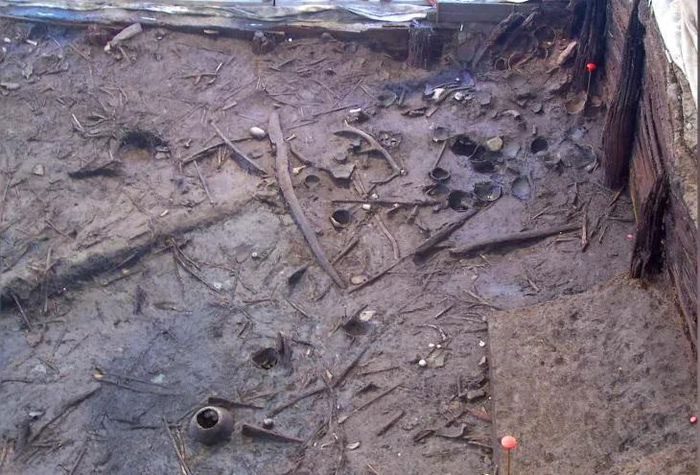According to a new study, a mysterious wooden structure built in Italy over 3,000 years ago may have served as a “sacred pool” during the Bronze Age, designed to give viewers the sensation of looking into another world during religious rituals.
Evidence suggests that the wooden basin was filled with water, and archaeologists believe it formed an artificial pool that reflected the sky and may have been used for underwater rituals.

This pool may have been used for underwater rituals.
One of the authors of the new study even compared this pool to the famous Stonehenge monument in England, noting that it too held symbolic significance that could have guided people into another realm.
Sturt Manning, an archaeologist at Cornell University in New York, stated that the pool-like structure could have been constructed around 1436 BCE to 1428 BCE—a time of significant cultural change in the region, reinforcing the idea that it was established for new ritual purposes.
Archaeologist Manning remarked: “As soon as you could see the water, you could effectively see the edge of the land around the sky. And as you approached it, you would only be looking at the [reflected] sky—so, in a sense, you were stepping into another world.”
Italian archaeologists discovered this structure near the town of Noceto, just west of Parma in the northern Po Valley of Italy. They named it “Vasca Votiva”, which translates to “votive basin” or “sacred tank.” The pool measures approximately 12 meters long, 7 meters wide, and over 3 meters deep. It was excavated on a small hilltop and then lined with wooden posts, planks, and beams; most of which are oak, with some made from elm or walnut.
Previous research on ritual vessels and small wooden figurines found within the basin revealed that the structure was built during the Bronze Age, likely between 1600 BCE and 1300 BCE.





















































